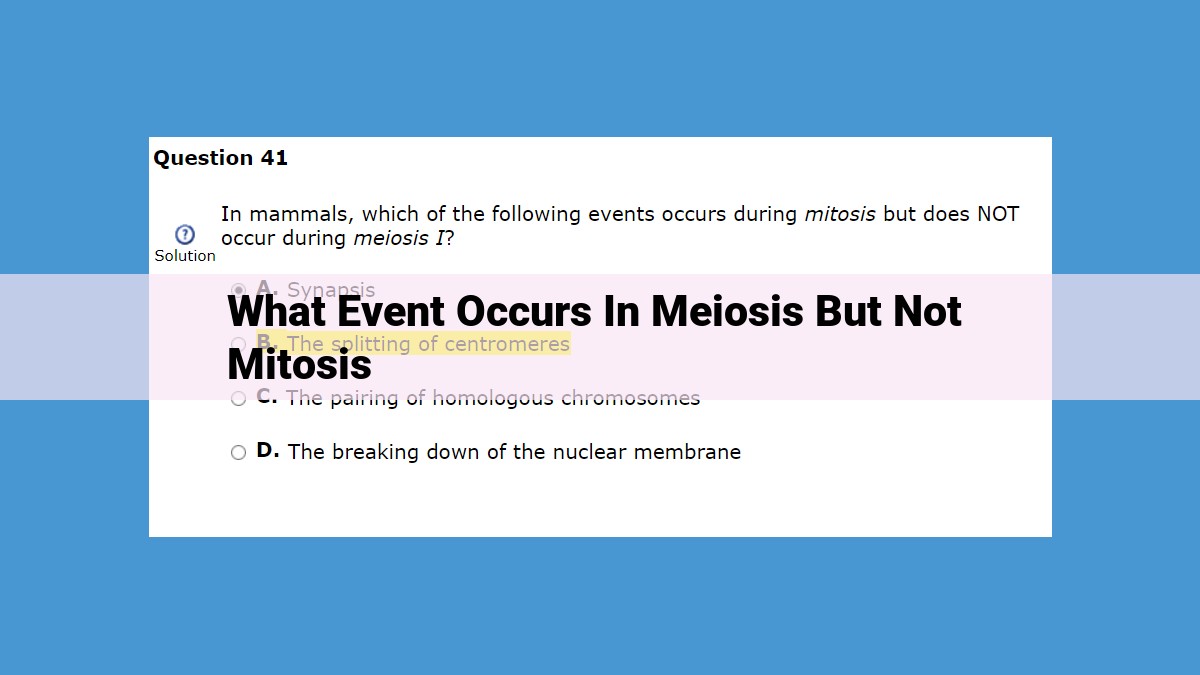<
ol>
Crossing-over occurs during meiosis when homologous chromosomes pair up and exchange genetic material, creating diverse gametes. This genetic recombination increases genetic diversity, providing a wider gene pool from which to adapt and survive.
Crossing-Over: The Genetic Shuffle
Unveiling the dance of chromosomes
Imagine a symphony of chromosomes, gracefully entwined in an ethereal dance. As they spin and intertwine, segments of their genetic code are exchanged, like dancers swapping melodies. This captivating process, known as crossing-over, is the catalyst for genetic recombination, the creation of novel genetic blueprints.
A genetic melting pot
During crossing-over, homologous chromosomes, identical in size and shape, align with exquisite precision. At designated points along their length, strands of DNA are severed and swapped like trading cards, leading to a harmonious blend of genetic material. This fusion of parental chromosomes results in offspring with a unique blend of traits, a testament to the power of genetic recombination.
The significance of diversity
Genetic recombination is the cornerstone of genetic diversity, the lifeblood of evolution. By constantly shuffling and recombining genetic sequences, it generates a vast repertoire of novel genotypes, each with its own unique strengths and weaknesses. This molecular lottery is essential for species to adapt to their ever-changing environments and survive the relentless test of time.
Independent Assortment of Chromosomes: A Random Draw
Just imagine a deck of cards, where each card represents a chromosome. Now, picture yourself shuffling this deck and dealing out two hands. Each hand would represent a set of chromosomes for an egg or sperm cell. This is essentially what happens during the process of independent assortment in meiosis. It’s like a genetic lottery that determines the unique combination of chromosomes inherited by each new organism.
During meiosis, the cell divides twice, going from a diploid cell (with two sets of chromosomes) to four haploid gametes (with one set of chromosomes). In the first meiotic division, the homologous chromosomes pair up and undergo crossing-over, exchanging genetic material. This shuffles the cards, mixing each deck with cards from the other.
The second meiotic division is where the independent assortment happens. Each pair of homologous chromosomes randomly separates from each other and goes to different gametes. This is like dividing the shuffled deck into two hands, one for each gamete. Since each gamete receives only one chromosome from each pair, it ensures that no two gametes have the exact same set of chromosomes.
This process of independent assortment is crucial for genetic diversity. It promotes the creation of a wide variety of genetic combinations, which increases the chances that at least some individuals in a population will have traits that are advantageous for survival in changing environmental conditions. It’s like having a more diverse portfolio in genetics.
In this way, independent assortment is a fundamental force driving the evolution of species. It’s the genetic lottery that shakes up the deck, ensuring that each new life has a unique and potentially advantageous hand to play in the game of survival.
Genetic Diversity: The Driving Force of Evolutionary Success
At the heart of evolution lies the remarkable phenomenon of genetic diversity. It is the cornerstone of life’s adaptability and resilience. Genetic diversity ensures that no two individuals are genetically identical, fueling the endless dance of evolution.
Two key processes play a pivotal role in fostering genetic diversity: crossing-over and independent assortment of chromosomes. During crossing-over, homologous chromosomes align and exchange genetic material, shuffling the genetic deck. This exchange creates novel combinations of alleles, increasing the reservoir of genetic variations within a population.
Meanwhile, independent assortment ensures that each gamete carries only one copy of each chromosome, preventing the duplication of genetic information. This random draw further diversifies the genetic makeup of offspring, maximizing the potential for evolutionary adaptation.
The significance of genetic diversity cannot be overstated. It empowers populations with a wider array of traits, allowing them to thrive amidst changing environments. Genetic diversity enhances resistance to diseases, reduces the risk of harmful genetic disorders, and promotes overall resilience in the face of adversity.
Throughout evolutionary history, genetic diversity has driven the ascent of species. Take the case of the peppered moth, which underwent a dramatic color transformation during the Industrial Revolution. As soot blackened the trees, peppered moths with darker coloration had a distinct survival advantage, demonstrating the power of genetic diversity in facilitating rapid adaptation.
The importance of genetic diversity extends beyond individual species. It ensures the stability and resilience of ecosystems. Populations with greater genetic diversity are more adaptable to changing conditions, reducing the risk of extinction and contributing to the overall health and balance of the natural world.
As we unravel the intricate tapestry of life, we must recognize the paramount importance of genetic diversity. It is the raw material of evolution, shaping the destiny of species and ecosystems alike. By valuing and preserving genetic diversity, we safeguard the vibrant tapestry of life for generations to come.
